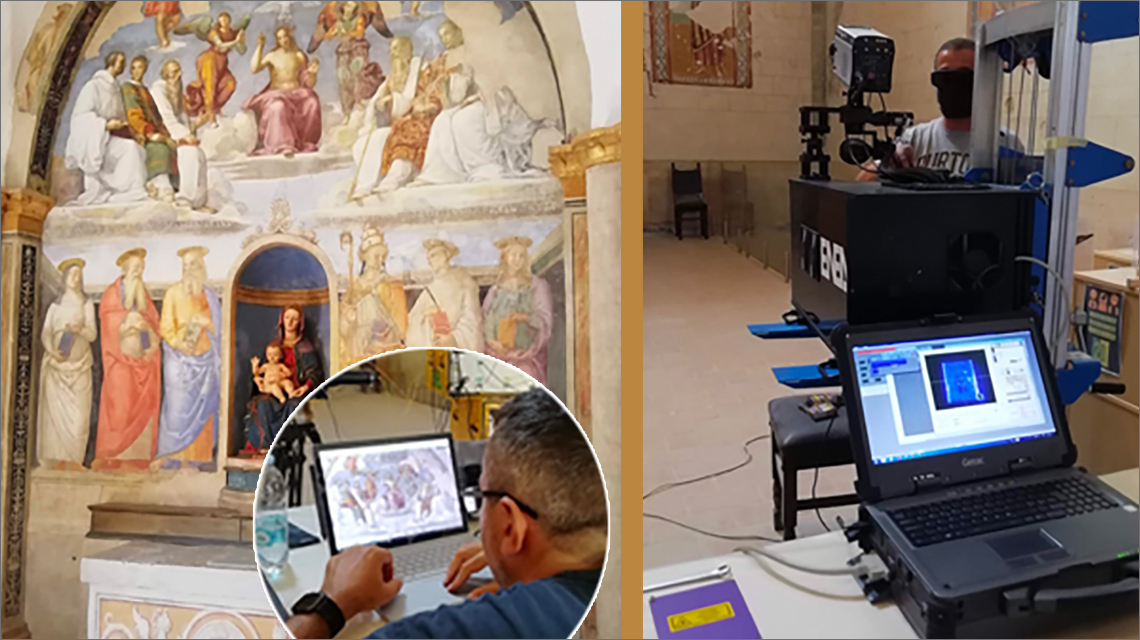Italian National Agency for New Technologies, Energy and Sustainable Economic Development

Cultural heritage: Laser technologies to monitor frescoes in Umbria
“Save the Beauty” project also to the rescue of a masterpiece by Raphael in Perugia
Monitor the frescoes of the monumental complex of San Bevignate and the "Trinity and Saints" by Raphael and Perugino in the Chapel of San Severo in Perugia with three-dimensional laser scanning and fluorescence techniques, also studying the composition of the colors and materials used.
This is what the ENEA researchers of the Frascati Research Center have achieved as part of the "Save the Beauty" campaign for the enhancement of cultural heritage, conceived by the journalist Monica La Torre and financed by the Umbria24 newspaper and by the Region of Umbria with the support of 'Department of Culture of the Municipality of Perugia and of the Faculty of Literature and Philosophy of the University of Perugia.
Two prototype laser scanners were used in the two sites: one equipped with three laser beams capable of promptly detecting information on the structure and color of the work of art, the other with ultraviolet laser for the study of the materials constituting the surface and the monitoring of biological attacks.
"The work carried out allowed both to study the materials and colors of which the frescoes are made, and to establish a zero year with respect to the monitoring of the works of which we now know the current state of health and that we will be able to constantly observe in the years to come. ”, Explains Massimiliano Guarneri, researcher of the ENEA Diagnostics and Metrology Laboratory at ENEA and coordinator of the team that involved colleagues Luisa Caneve, Valeria Spizzichino, Massimo Francucci, Massimiliano Ciaffi and Marco Pistilli.
The first data collected led to the creation of two applications for mobile devices, created by the Oniride company, which support the visitor in reading the frescoes and also used on the interactive totem in San Bevignate.
"One of the objectives set was to make the vision of the frescoes dynamic, facilitating the vision of the complex, even of the higher parts, otherwise impossible to observe", concludes Guarneri
"The project acquires particular importance due to the fact that the municipal administration of the Umbrian capital will be the leader of the network of European Templar sites: in this perspective, the intervention on San Bevignate acquires centrality and transnational importance", underlined the creator of the “Save the Beauty” project, Monica La Torre, on the occasion of the reopening of the Chapel of San Severo after the restoration. “The contacts already initiated with the Engineering Faculty of the Perugia University for a comparison on different surveys already carried out on the site, travel in this direction and open a season of further research and in-depth analysis. All this, hopefully destined to contribute in a fundamental way to the preservation of the monumental complex, in line with the non-profit nature at the basis of the project ”, concludes La Torre.
Raphael painted the fresco in the Chapel of San Severo in the years 1505-08, but he left it unfinished. After the death of the artist from Urbino in 1520, this only work of his left in the city was completed by his master Pietro Perugino, now an elderly man.
